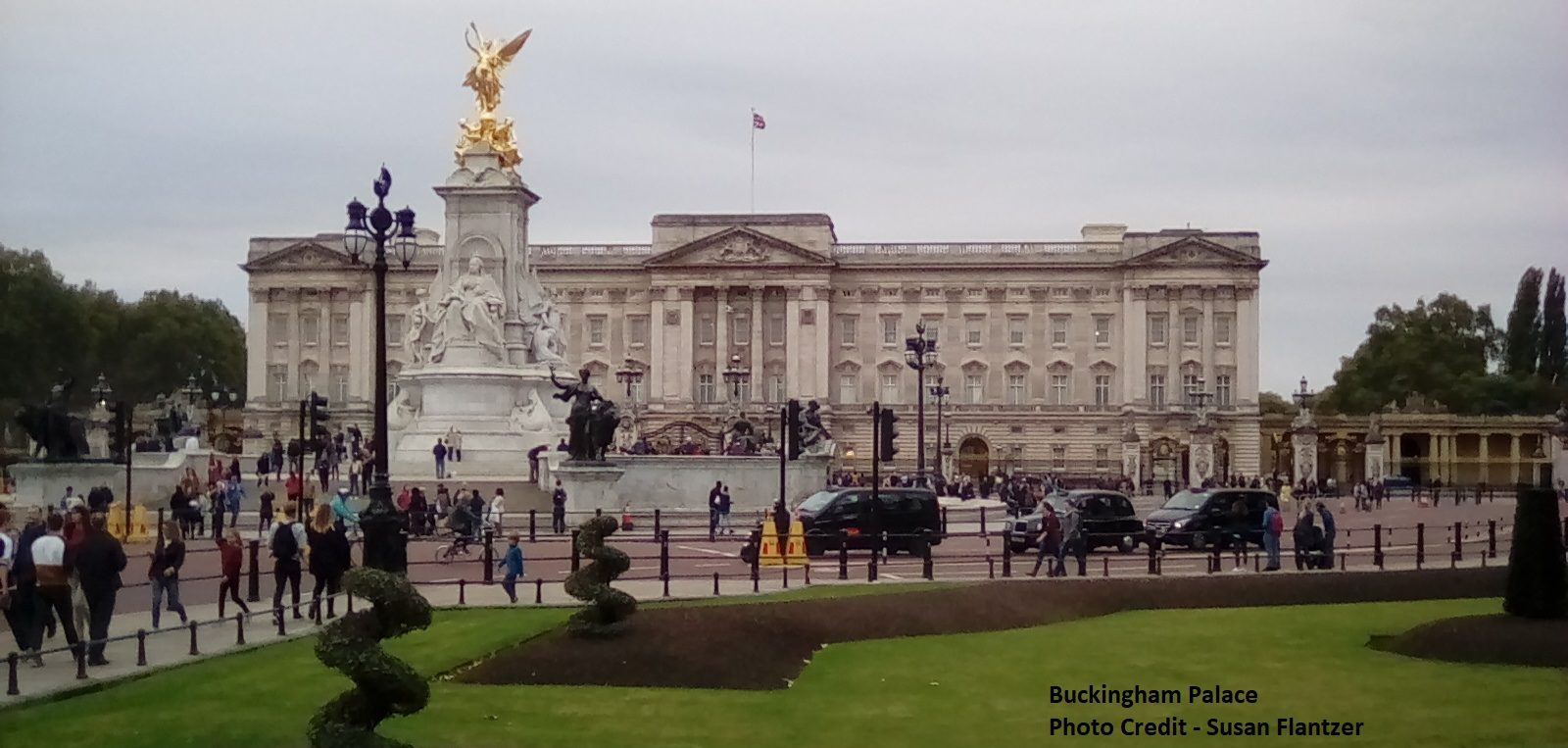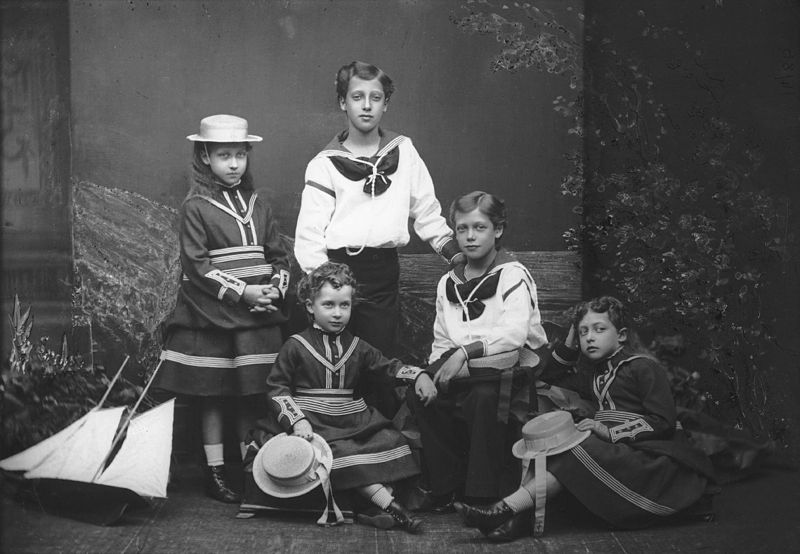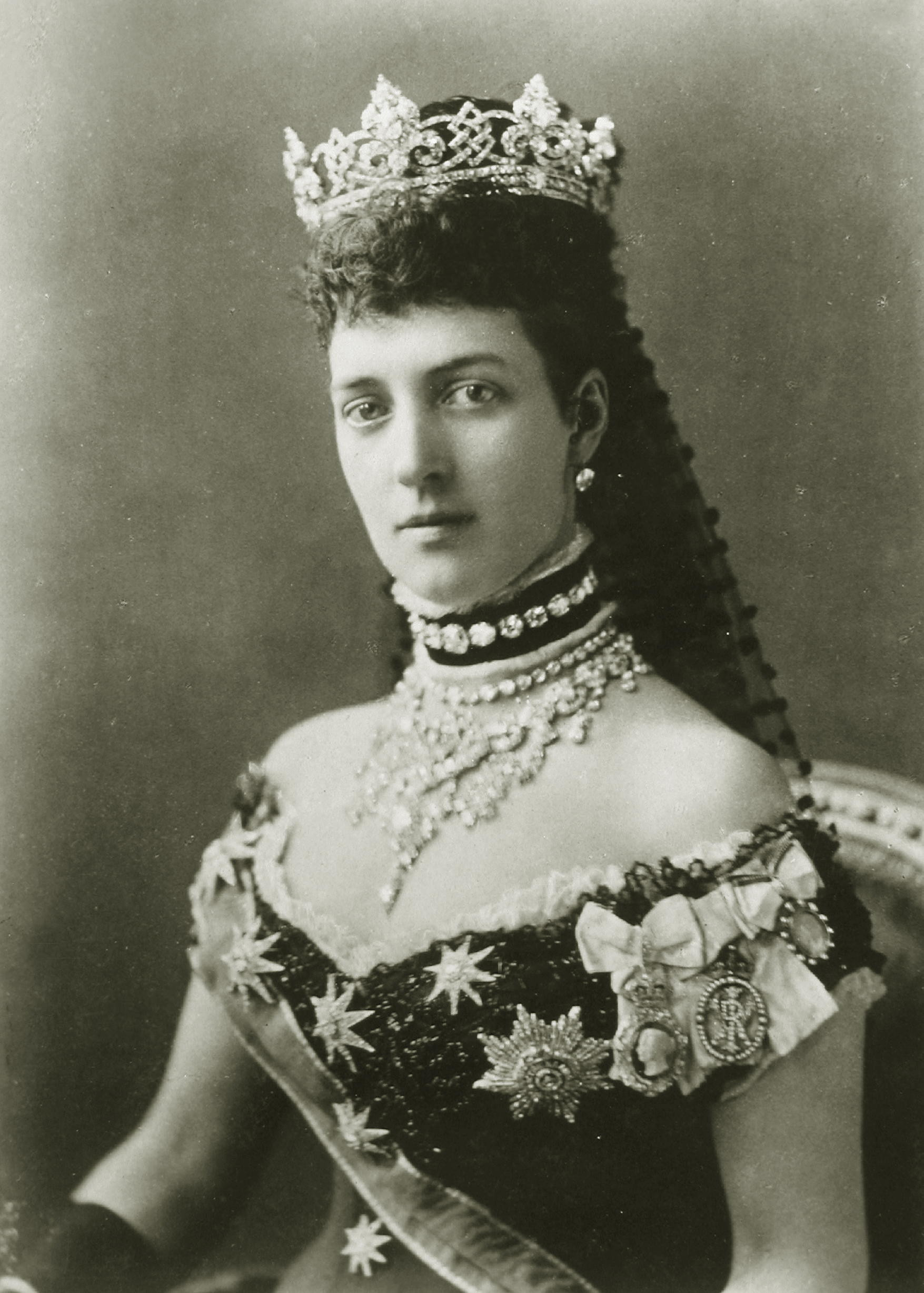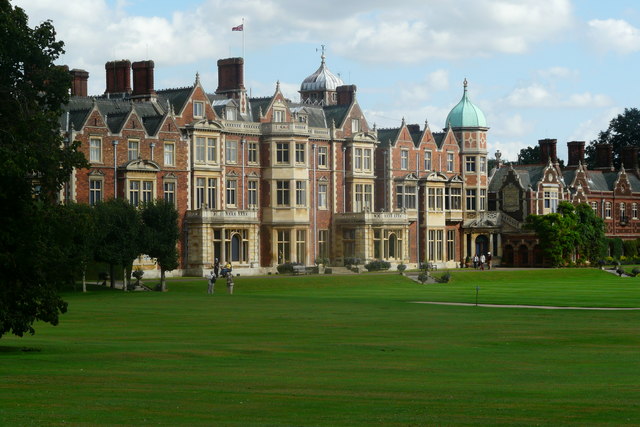by Susan Flantzer © Unofficial Royalty 2014

Princess Alexandra, 2nd Duchess of Fife; Credit – Wikipedia
Alexandra Victoria Alberta Edwina Louise was born on May 17, 1891, at East Sheen Lodge in Richmond, London, England. She was the eldest surviving child of Princess Louise, Princess Royal and Alexander Duff, 1st Duke of Fife, and a grandchild of King Edward VII of the United Kingdom. As a female-line great-granddaughter of the British sovereign, (Queen Victoria), Alexandra was not entitled to the title of Princess or the style Royal Highness. Instead, she was styled Lady Alexandra Duff, the style of daughters of a Duke. Through their father, Alexandra and her sister Maud were descendants of King William IV of the United Kingdom, who had no legitimate children but had ten illegitimate children with actress Dorothea Jordan.
Alexandra had one sister:
- Maud (1893 – 1945), married Charles Carnegie, 11th Earl of Southesk, had issue

Alexandra on the right with her mother and sister; Credit – Wikipedia
In 1900, when it became apparent that the Duke and Duchess of Fife were unlikely to have a son to inherit the title, Queen Victoria issued the Duke of Fife a new Letters Patent as Duke of Fife and Earl of Macduff in the Peerage of the United Kingdom. This Letters Patent gave the second dukedom of Fife a special remainder that allowed the dukedom to pass to the daughters of the 1st Duke of Fife, if he had no son, and then to the male heirs of his daughters. Therefore, Alexandra became heir to her father’s dukedom.
Alexandra’s mother was the eldest daughter of King Edward VII and was created Princess Royal in 1905, during her father’s reign. At the same time, Alexandra and Maud were granted the title of Princess with the style of “Highness” and received precedence immediately after all members of the royal family bearing the style of “Royal Highness.” This act was unprecedented, and when the College of Arms told King Edward VII it could not be done, the King simply said, “Do it!” Alexandra and Maud’s maternal uncle, the future King George V, was greatly disturbed by this act.

Prince Arthur of Connaught and Princess Alexandra on their wedding day; Credit – Wikipedia
On October 15, 1913, at the Chapel Royal of St. James’ Palace in London, England, Alexandra married her first cousin once removed, Prince Arthur of Connaught, the only son of Prince Arthur, Duke of Connaught, a son of Queen Victoria. Because Alexandra’s father had died the year before, King George V, her uncle, gave her away. After her marriage, Alexandra was styled Her Royal Highness Princess Arthur of Connaught, Duchess of Fife.

Alexandra and Arthur with their son Alastair in 1920; Credit – Wikipedia
Alexandra and Arthur had one son, Alastair Arthur, born on August 9, 1914, at his parents’ home at 54 Mount Street, in Mayfair, London, England. As a great-grandchild of Queen Victoria through the male line, Alastair was styled His Highness Prince Alastair of Connaught until he was three years old. At that time, King George V restricted the titles of Prince/Princess and the style of Royal Highness to the children of the sovereign, the children of the sovereign’s sons, and the eldest living son of the eldest son of the Prince of Wales. Alastair was then styled Alastair Windsor with the courtesy title Earl of Macduff, his mother’s secondary title.

Alexandra at a women’s exhibition in 1915; Credit – Wikipedia
Alexandra and her husband carried out engagements on behalf of King George V and King George VI. During World War I, Alexandra served as a nurse at St. Mary’s Hospital in Paddington, London, England. From 1920 to 1924, Prince Arthur served as Governor-General of South Africa, and Alexandra accompanied him there. When the couple returned to the United Kingdom, they continued their royal duties.

Alastair Windsor, 2nd Duke of Connaught; Credit – Wikipedia
On September 12, 1938, Prince Arthur died of stomach cancer at the age of 55. He was buried at the Royal Burial Ground in Frogmore, Windsor, England. As Prince Arthur predeceased his father, The Duke of Connaught, Arthur’s son Alastair became heir to the dukedom. In 1942, upon the death of his paternal grandfather Prince Arthur, Duke of Connaught, Alastair succeeded him as the 2nd Duke of Connaught. On April 26, 1943, while on active duty with the British Army in Ottawa, Canada, the 28-year-old Alastair fell asleep or passed out in front of an open window while inebriated, fell out the window, and died of hypothermia during the night. On his death, his titles became extinct.
Alexandra died at her home in London on February 26, 1959, at the age of 67. She is buried in the private chapel in the mausoleum of Mar Lodge in Braemar, Aberdeenshire, Scotland, where her parents are buried. Alexandra’s nephew, James Carnegie, the only child of her sister Maud, succeeded her as the 3rd Duke of Fife.

Alexandra’s grave; Credit – Wikipedia
This article is the intellectual property of Unofficial Royalty and is NOT TO BE COPIED, EDITED, OR POSTED IN ANY FORM ON ANOTHER WEBSITE under any circumstances. It is permissible to use a link that directs to Unofficial Royalty.


















